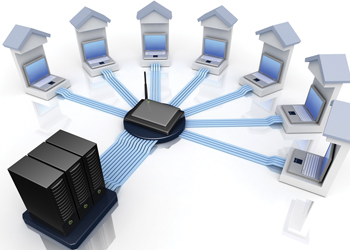After our systems went completely virtualised more than ten years ago, I didn’t think we would ever see change like that again. It was an infographic showing the evolution of office hardware, which made me realise that we have actually undergone an even greater change than when we first reverted to virtualisation.
To clarify, twenty years ago, our office contained many computers or processing units, each with their own hardware resources that for the largest part of the working day/week, would be hardly used to their capacity. The cost of personal computers dropped quickly years ago and that made purchasing more power than was initially needed a sensible option. Unfortunately, nothing lasts forever and we soon found ourselves upgrading individual systems unit-by-unit because of the costs. This resulted in a two-tiered office where some people had powerful machines and others were lagging behind.
The Virtualisation Solution We’d Forgotten
To say that we’d forgotten about virtualisation was a little misleading, because we’d never used it on any scale. Our old Solaris network running Unix from the late 90s, was never the easiest beast to master and as many of our applications were reliant on the Unix platform, we had put off changing the office for far longer than we should. Considering Sun released this PDF with as the ‘Common Messages and Troubleshooting Guide’ and it came out at 272 pages says it all really.
Our decision came about partly through necessity and partly, pure chance. We attended a local networking or meet and greet, to drum up some business and spoke at length with a provider who installed network servers and various other IT solutions to businesses. After being reliably told that we could halve (I think quarter was mentioned at one point) our upgrade costs, retain our legacy software systems and improve efficiency, we turned from salespeople into buyers at what should have been an opportunity to win new contracts.
So What’s the Biggest Change Since our Desktop Virtualisation?
After converting our network to allow one main server rack to power the whole businesses, we found we were able to allow staff to bring their own devices to work in all but the most IT dependent departments. In other words, staff still use our systems when their roles are system admins or they need to access our legacy software systems that have survived from the 90s. However, in most cases, the people are happy to use their own devices to log into our servers and access a remote desktop.
This has resulted in a plus for the business for two reasons:
- We now only need to upgrade one unit, which is our server, when the time comes to upgrade.
- If we want to expand, we are not constantly looking for a desk space that has a monitor, keyboard, mouse etc.
We have found that making our network available to people on their own devices has boosted productivity an immeasurable amount in the last two years, as people tend to take their work home rather than remain at the office.
Granted, when we changed from distributed processing to a desktop virtualisation system (See the Dell setup we chose http://www.dell.com/learn/uk/en/ukbsdt1/virtual-client), we had some initials fears about security, but they were unfounded.

You can also stay updated by subscribing to iTechCode.